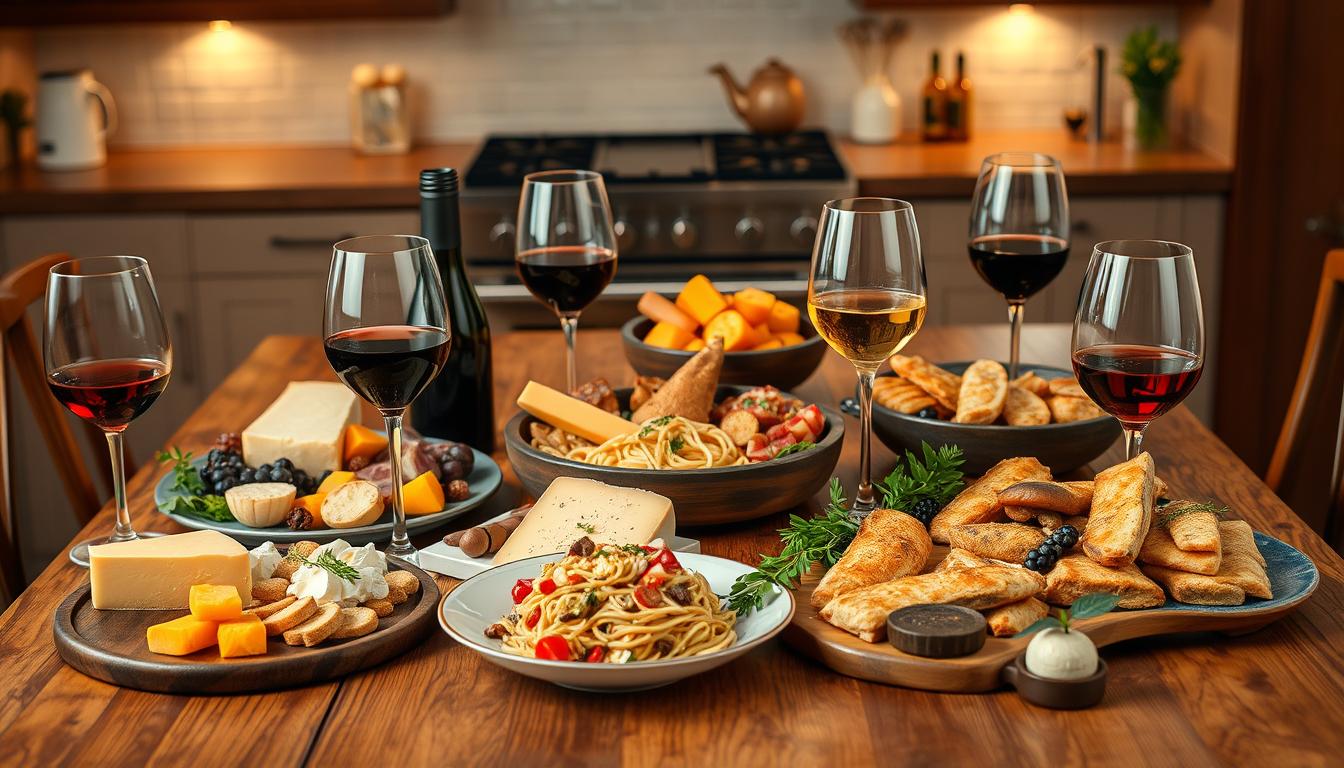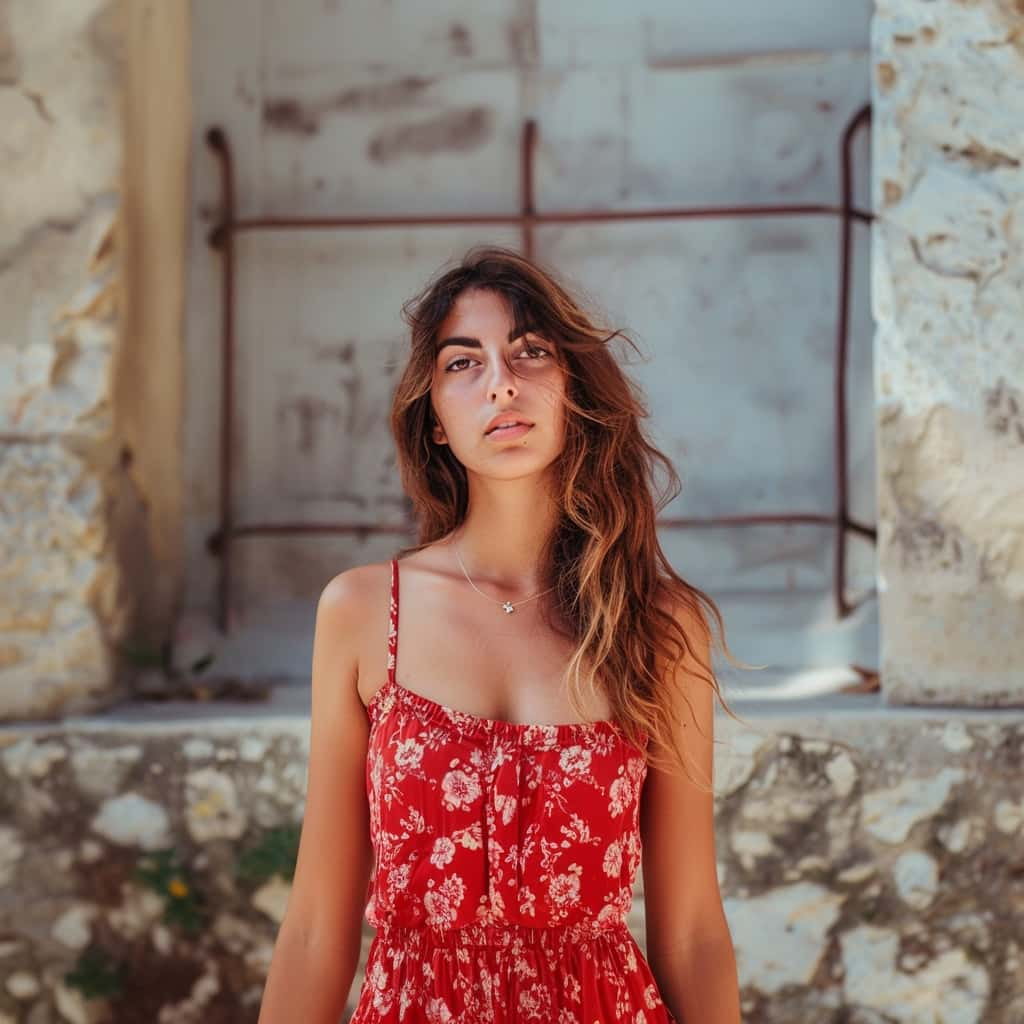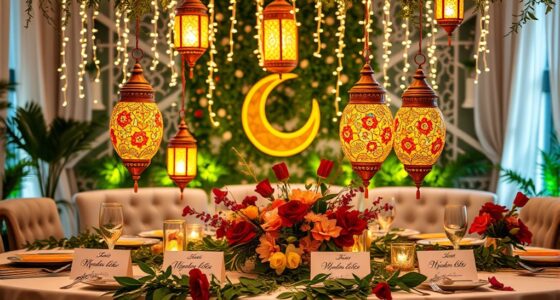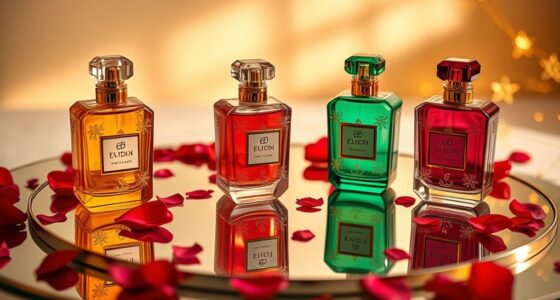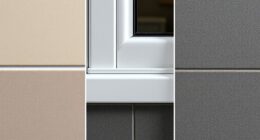There’s something magical about the *pop* of a sparkling wine bottle, isn’t there? In an instant, the air is filled with excitement, bubbles froth in your glass, and you can almost hear the laughter and clinking of glasses around you. Perhaps it’s a wedding celebration, a milestone birthday, or just a casual gathering with friends; every time you raise a glass of sparkling wine, you’re not just enjoying a beverage—you’re embracing a moment. Whether it’s the elegance of Champagne, the lightness of Prosecco, or the affordability of Cava, sparkling wines offer a myriad of choices that can elevate any occasion. By diving into the delightful realm of sparkling wines, you’ll find the best sparkling wines to make every toast memorable, and delve into sparkling wine reviews that can guide you through this effervescent journey.
Key Takeaways
- Sparkling wines create unforgettable moments, perfect for every celebration.
- The diversity of sparkling wines includes Champagne, Prosecco, and Cava.
- California is rapidly gaining a reputation for high-quality sparkling wines.
- Each sparkling wine type brings unique flavors and characteristics.
- Understanding sweetness levels can enhance your wine selection for any occasion.
- Effervescent choices cater to a range of budgets and preferences.
The Joy of Celebrating with Sparkling Wines
When it comes to marking special moments, few beverages can rival the charm of sparkling wines. These delightful effervescents create an atmosphere of joy and unity, making them perfect for various celebrations. Whether it’s a grand wedding or an intimate gathering, sparkling wines provide a versatile choice for every occasion. The act of toasting with bubbly brings an extra layer of festivity to your event.
Versatile for Every Occasion
Sparkling wines easily adapt to any celebration. They grace the tables of opulent banquets and honor casual get-togethers alike. This versatility makes them a go-to option for countless events:
- Weddings
- Anniversaries
- Birthdays
- New Year’s Eve
- Graduations
Symbolism of Celebration
Clinking glasses filled with sparkling wines has become synonymous with celebration, carrying a rich history that enhances their allure. The bubbles in sparkling wines represent renewal and optimism, embodying a fresh start. This symbolism resonates universally, whether you’re wishing farewell to the past or welcoming new opportunities. The ritual of toasting serves as a reminder of shared hope and joy, amplifying the spirit of any gathering.

Understanding the Different Types of Sparkling Wines
Exploring the world of sparkling wine types reveals a delightful range of flavors, production methods, and styles. From the opulent charm of champagne to the refreshing notes of prosecco and the robust character of cava, each category offers something unique for every palate. Understanding these different types enhances your appreciation for these effervescent beverages.
Characteristics of Champagne
Champagne is synonymous with celebration and luxury, primarily produced in the Champagne region of France. This prestigious wine undergoes a traditional method of fermentation, which creates its distinct bubbles and complex flavors. Notable for its rich, creamy, and nutty taste profiles, champagne often features notes of toast, brioche, and subtle fruit. The rigorous production process ensures that only the best grapes, such as Chardonnay and Pinot Noir, contribute to this exquisite drink.
Exploring Prosecco
Originating from Italy, prosecco is a delightful sparkling wine known for its vibrant freshness and fruity notes. The tank method used to produce prosecco results in a clean and youthful taste, making it a popular choice for casual occasions. Often described as light, dry, and fruity, this wine appeals to those seeking a sweeter alternative to traditional sparkling wines. Its hints of green apple and florals make prosecco ideal for sipping on warm afternoons or pairing with light appetizers.
Cava: The Spanish Favorite
Cava stands out as a budget-friendly sparkling wine hailing from the Catalonia region of Spain. Like champagne, it is made using traditional methods, requiring extended aging on the lees to develop its flavors. Cava features a diverse range of classifications based on aging, from cava de guarda to cava de paraje calificado. With its zesty and complex flavor profile, cava provides an excellent option for those who appreciate quality sparkling wines without breaking the bank.

Champagne: The Quintessential Choice
When it comes to sparkling wines, champagne stands out as a hallmark of luxury and celebration. Understanding the production and quality of this exquisite beverage reveals the secrets behind its exceptional reputation. Crafting champagne involves a meticulous process that ensures every bottle delivers an experience worth toasting to.
Production and Quality
The journey of champagne begins in the Champagne region of France, where strict regulations uphold its quality. The process involves double fermentation, a technique that creates the fine bubbles and complex flavors distinctive to champagne. This method ensures that the production and quality remain consistent, allowing producers like Moët & Chandon and Bollinger to maintain their esteemed positions in the market.
Various classifications highlight differing characteristics and aging requirements:
| Champagne Type | Grapes Used | Aging Requirement |
|---|---|---|
| Cuvée de Prestige | Chardonnay, Pinot Noir | Minimum 5 years |
| Blanc de Noirs | Pinot Noir | Minimum 3 years |
| Rosé Champagne | Pinot Noir, Chardonnay | Minimum 2 years |
Sweetness Levels in Champagne
The sweetness levels in champagne cater to a variety of palates, ranging from the dry Extra Brut to the sweeter Doux. This scale allows you to select the perfect bottle for any occasion. Here’s a breakdown of these levels based on residual sugar content:
| Sweetness Level | Residual Sugar (g/l) |
|---|---|
| Extra Brut | 0-6 |
| Brut | 0-12 |
| Demi-Sec | 32-50 |
| Doux | 50+ |
With such a range available, champagne easily complements formal events and special gatherings, making it the quintessential celebratory drink for any toast.

Prosecco: The Lighter Alternative
When you’re seeking a refreshing choice for your gatherings, prosecco stands out as a delightful option. This sparkling wine offers a vibrant and fruity profile, highlighting the charm of Italian bubbles. Crafted primarily from the Glera grape, its production involves the Charmat method, which preserves the wine’s natural fruit flavors and results in larger, lively bubbles. This method accentuates the sweetness and lightness of prosecco, making it an excellent pick for various occasions.
The Charm of Italian Bubbles
Prosecco’s appeal lies in its approachable taste and affordable pricing. Many enthusiasts appreciate its sweet nature, which contrasts with the drier offerings of traditional champagne. This charm of Italian bubbles has made prosecco a favorite among wine drinkers, with the Valdobbiadene Conegliano and Asolo Prosecco often retailing at around $17. Its immense popularity is evident, especially in the UK, where a substantial portion of the production is enjoyed each year.
When to Choose Prosecco
Prosecco serves as a lighter alternative suited for casual celebrations, summer brunches, or even as a delightful accompaniment to dessert. Whether you’re hosting a relaxed gathering, toasting to a special occasion, or simply unwinding after a long day, prosecco fits seamlessly into any festive atmosphere. Its versatility ensures you can enjoy it with an array of dishes, from antipasto platters to fruit tarts.

Cava: Budget-Friendly Sparkling Wine
Cava stands out as an impressive option in the world of sparkling wines, particularly for those seeking a budget-friendly sparkling wine that does not compromise quality. Produced mainly in Catalonia, Spain, this sparkling wine showcases similar production methods to Champagne. Both undergo secondary fermentation in-bottle, allowing carbon dioxide to develop the signature bubbles. This traditional method leads to notable similarities with Champagne, making Cava a competition-worthy alternative.
Similarities with Champagne
The artistry involved in Champagne production mirrors that of Cava. In both cases, the secondary fermentation method contributes to the development of complex flavors. Notably, Cava producers utilize regional Spanish grapes like Macabeo, Parellada, and Xarello, echoing how Champagne relies on varieties like Chardonnay and Pinot Noir. This process results in a sparkling wine that can often be found at a fraction of the cost of Champagne, with excellent Cava frequently available for under $20.
Flavor Profiles of Cava
Cava boasts a vibrant flavor profile, typically characterized by bright citrus notes, crunchy orchard fruits, and a delightful minerality. The wine’s interaction with spent yeast during production introduces yeasty characteristics, enhancing its complexity. With varying levels of sweetness, from brut to semi-seco, Cava appeals to many palates. Its versatility allows it to pair beautifully with a range of dishes, including aperitifs, fried foods, and lighter pasta options.

Unveiling Sparkling Wine Brands to Consider
When exploring sparkling wine brands, you’ll find a host of options that cater to various tastes and occasions. This section introduces notable American producers and highlights prominent international sparkling wine labels that stand out in the global market.
Notable American Sparkling Wine Producers
The United States has made remarkable strides in the sparkling wine scene. A few notable American producers to consider include:
- Schramsberg: Known for its traditional method Champagne-style wines, Schramsberg continues to receive accolades for quality and innovation.
- Mumm Napa: Offers a range of sparkling wines that are perfect for both casual and formal celebrations, consistently showcasing a unique Californian character.
- Gruet Winery: This New Mexico winery produces award-winning sparkling wines at accessible price points, making it a must-try for enthusiasts.
- Domaine Carneros: Specializes in high-quality sparkling wines, notable for its elegant blends and beautiful estate views.
- Gloria Ferrer Wines: Celebrated for blending traditional techniques with modern style, providing a rich variety to explore.
Top International Sparkling Wine Labels
International sparkling wine labels have much to offer, showcasing distinct styles and flavors. Here are some of the most renowned brands:
- Moët & Chandon: A flagship Champagne house, known for its iconic bottles and a rich history that dates back to the 18th century.
- Veuve Clicquot: Famous for its quality and signature yellow label that signals sophistication and celebration.
- Cava: Spain’s answer to Champagne, featuring an array of styles ranging from dry to sweet, often produced with native grape varieties.
- Franciacorta: An Italian sparkling wine that adheres to strict regulations, resulting in outstanding quality and delectable flavors.
- Crémant de Limoux: A fantastic alternative to Champagne, offering great value with examples often priced under $25.

With such a diverse range of sparkling wine brands, both from notable American producers and esteemed international labels, your next toast can be an exquisite experience that reflects your unique celebration style. Whether you prefer classic brands or artisanal options, there is a sparkling wine waiting for you to discover.
| Producer | Location | Price Range | Notes |
|---|---|---|---|
| Schramsberg | California, USA | $25+ | Traditional method, highly rated |
| Mumm Napa | California, USA | $20+ | Versatile and approachable |
| Moët & Chandon | Champagne, France | $45+ | Iconic Champagne house |
| Veuve Clicquot | Champagne, France | $50+ | Rich history, vibrant flavors |
| Crémant de Limoux | Limoux, France | $13 – $25 | Affordable alternative to Champagne |
Making the Right Choice: Sparkling Wines for Your Events
Choosing the right sparkling wines for events can enhance your celebration experience. The selection often depends on whether the occasion is a formal celebration or a casual gathering. Understanding the differences between these types of occasions will help you make the most suitable wine choices.
Formal Celebrations vs. Casual Gatherings
For formal celebrations, such as weddings or corporate events, Champagne is often the go-to choice. Made primarily from Chardonnay, Pinot Noir, and Pinot Meunier grapes in the Champagne region of France, it exudes luxury. The craftsmanship involved in creating true Champagne results in higher price points, making it an ideal choice for memorable moments.
On the other hand, casual gatherings allow for a wider variety of sparkling wines. Prosecco, made from the Glera grape in Italy, and Cava, produced using traditional methods in Spain, serve as budget-friendly alternatives to Champagne. Their approachable taste profiles cater to a relaxed setting, ensuring everyone enjoys the festivities.
Pairing Food with Sparkling Wines
When it comes to pairing food with sparkling wines, considering the sweetness and flavor profiles is key. The labeling of sparkling wines provides insight into their taste; terms like Brut, Demi-Sec, and Extra Dry indicate the level of residual sugar. For instance, Brut, with less than 12g of sugar per liter, is fantastic with salty appetizers or seafood, while Demi-Sec, which is sweeter, pairs beautifully with desserts.
Here’s a quick reference table for pairing sparkling wines with food:
| Sparkling Wine Type | Ideal Food Pairings |
|---|---|
| Champagne | Oysters, caviar, and creamy cheeses |
| Prosecco | Spicy dishes, seafood pasta, and light salads |
| Cava | Tapas, grilled meats, and rustic bread |

The Pricing Landscape of Sparkling Wines
Exploring sparkling wine prices involves understanding the diverse price points associated with various types of sparkling wines. When selecting the perfect bottle, being aware of these ranges helps you find the best wines that align with your budget while still impressing your guests.
Understanding Price Points
In the world of sparkling wines, price often reflects the quality and origin of the product. Champagne typically sits at the higher end of the spectrum due to its prestigious status and rigorous production methods. Prosecco and Cava, on the other hand, are known for offering excellent quality at more accessible prices.
- Champagne: Prices generally range from $40 to several hundred dollars per bottle, reflecting its exclusivity and craftsmanship.
- Prosecco: Often found between $10 and $30, it presents a wallet-friendly option rich in flavor.
- Cava: Available for $12 to $30, this Spanish sparkling wine is celebrated for balancing taste and affordability.
Understanding this pricing landscape can assist you in navigating sparkling wine prices effectively.
Finding Value in Your Selection
Finding value in sparkling wines can significantly enhance your wine experience without breaking the bank. Keep an eye out for brands that deliver quality at lower price points and remember that a higher price does not always guarantee superior taste.
- Research labels and producers—focusing on lesser-known producers can yield excellent finds.
- Attend tastings—participating in local events can introduce you to new sparkling wines within your preferred budget.
- Consider buying directly from wineries—this can sometimes reduce costs while ensuring quality.
By applying these tips, you can enjoy delicious sparkling wines while balancing your expenses, ensuring your selections meet both your budget and your guests’ expectations. When shopping for sparkling wines, look for affordable options from different regions, such as Cava from Spain or Prosecco from Italy. Additionally, consider investing in a wine aerator for enhanced flavors, which can help improve the quality of budget-friendly sparkling wines. With these strategies in mind, you can confidently serve and enjoy a variety of delicious sparkling wines without breaking the bank.

Tips for Elevating Your Toasts with Sparkling Wines
Enhancing your toasting experience involves careful consideration of both the glassware and the temperature at which you serve your sparkling wines. These elements significantly impact the enjoyment of your sparkling wine, allowing for a memorable toast every time.
Glassware Matters
The choice of glassware plays a crucial role in how you experience sparkling wines. Using champagne flutes or white wine glasses is recommended, as their shape preserves the bubbles and enhances the aroma of the wine. Tall flutes help to maintain the effervescence longer, allowing your guests to savor each sip. Consider the following options:
- Champagne Flutes: Ideal for showcasing bubbles and aromas.
- Demi-Sec and Prosecco glasses: Suitable for sweeter sparkling wines.
- White Wine Glasses: Versatile and perfect for food pairings.
Serving Temperature for Optimal Flavor
The serving temperature for sparkling wines greatly affects their flavor profile. For the best experience, aim for a range of 47°F to 50°F (8°C to 10°C) when serving Champagne. Proper chilling helps to maintain the integrity of the wine and allows you to fully appreciate its distinctive qualities.
When preparing for events, ensure bottles are chilled well in advance and kept at a stable temperature between 45°F and 55°F (7°C to 13°C). Remember to open only as many bottles as necessary since the quality diminishes post-opening. Pouring Champagne at a 45-degree angle and filling the glass two-thirds full can help retain carbonation and prevent excessive foam.

| Glass Type | Best For | Temperature |
|---|---|---|
| Champagne Flute | Preserving bubbles | 47°F – 50°F (8°C – 10°C) |
| Demi-Sec Glass | Sweeter sparkling wines | Below 50°F (10°C) |
| White Wine Glass | Food pairings | 47°F – 50°F (8°C – 10°C) |
Following these tips for elevating toasts through thoughtful glassware choices and optimal serving temperatures for sparkling wines will ensure a delightful experience for you and your guests. Each toast can transform into a cherished moment worth celebrating.
Conclusion
As you navigate through the diverse world of sparkling wines, it’s essential to recognize their significance in celebrating life’s special moments. From the refined elegance of Champagne to the crisp freshness of Prosecco, celebrating with sparkling wines creates an atmosphere of joy and togetherness.
Each type of sparkling wine, whether it’s the budget-friendly Cava, the alluring Asti Spumante, or the underrated Crémant, offers a unique flavor profile that enhances any occasion. By exploring these options, you’ll find the perfect bottle that resonates with your celebration, ensuring memorable experiences with loved ones.
Ultimately, sparkling wines not only amplify the spirit of any gathering but also serve as a symbol of unity and festivity. Embrace the charm of these effervescent delights and elevate your toasts, whether it’s a grand event or a simple get-together. Your next celebration deserves the sparkle!

